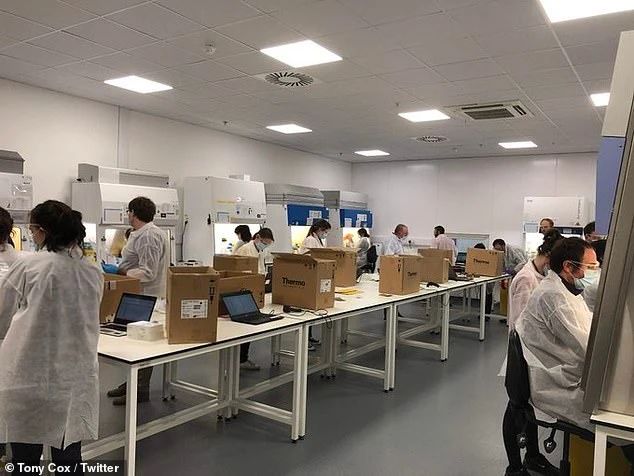At the critical moment of panic after the discovery of mutant COVID-19, the Lighthouse Laboratory, Britain’s largest virus detection laboratory, has fallen again.
Although the official denied the black information about the lighthouse laboratory, the question from public opinion is inevitable: How many loopholes are there in Britain’s epidemic prevention work?
4 teams and 3 tricks
The Kane Lighthouse Laboratory, which just launched in April, is the largest coronavirus testing laboratory in the UK. This virus testing laboratory run by the British government and operated by private companies is highly expected by the British.
The government expects it to be part of the UK’s “NHS testing and tracking system to stop the spread of the novel coronavirus”, helping the UK improve the efficiency of virus testing, getting more people tested, getting feedback within 24 hours, and Prime Minister Johnson visited the laboratory in June.
Recently, due to the severe epidemic in Britain, the lighthouse laboratory has been rushing to work day and night.
But even if the staff give up Christmas and work twice a day 12 hours a day, the laboratory can only process up to 50,000 samples a day.
It is such a laboratory with a very high level of protection. British media revealed that it was “paralyzed” by the virus stem hidden in the dark: confirmed cases of the novel coronavirus were found in the administrative and warehouse staff, and three of the four scientific teams showed positive patients. It is said that 20 of one of the 70-member teams are being quarantined.
It is not clear how many confirmed cases have appeared in the laboratory, but in short, the situation is not good.
Cross-infection in the canteen
How did the virus detection laboratory “fall” layer by layer of prevention? There is a discipline that is not enforced, according to British media and sources, which seems to be the biggest problem in the Lighthouse Lab.
The laboratory uses the “bubble mechanism” to limit the social scope of staff. That is to say, everyone only deals with people within a certain range to avoid insiders from contracting viruses from the outside.
However, the lighthouse laboratory is not well implemented at all.
The canteen, a place for new recruits waiting for COVID-19 testing reports, and a lounge for the laboratory science team.
As a result, just as the scientific team was resting in the canteen, a new warehouse manager, who was also in the canteen, was notified to test positive.
“The whole thing is a joke.” The staff of the lighthouse laboratory complained.
Long exposed internal chaos
However, the accident in the lighthouse laboratory was also expected.
As early as October, Dr. Harris, who was working on swab samples in the laboratory, expressed his concerns about laboratory safety through the media. At that time, the laboratory mainly had the following problems:
The first is the lack of experience of employees. Harris said that coronavirus swab samples must be sent to a laboratory under secondary protection for processing, and there should be strict safety procedures.” But I found that colleagues did not seem to have experience working in the secondary protection laboratory and did not know how to deal with these dangerous samples.
Then they went into the laboratory like this. As a result, the laboratory saw two people share biosafety cabinets and open test tubes with swab samples.” But the biosafety cabinet can only be operated by one person, and two people operating at the same time will disturb the airflow, which is no different from working on an open workbench.
On another occasion, Harris was frightened by his colleagues, who did not know how dangerous the sample he was working on.
The second is the lack of protective equipment.
Overloaded workloads have forced employees to go on two shifts, tired and reduced in resistance, but they are not given the protection they deserve, and people are asked to enter the laboratory to test samples in cheap disposable laboratory clothes and plastic gloves wrapped in tape.” If you appear in the biomedical laboratory of the hospital, you will not be allowed to enter the laboratory. “It’s really disturbing,” Harris said. “The way the lighthouse lab works is chaotic and dangerous.”
After the exposure of these black materials, the British Biological Center, which is in charge of the operation of the lighthouse laboratory, responded at that time, said that strict safety measures had been taken and was being made to rectify and strengthen training.
A spokesman for the Department of Health and Social Health also said: “There are strict quality control and safety procedures throughout the laboratory network, and we hope to meet the highest standards.”
However, two months later, something happened to the “chaotic and dangerous” lighthouse laboratory. The British who received the “bad news” of the epidemic exclaimed: “They are playing with fire!”



